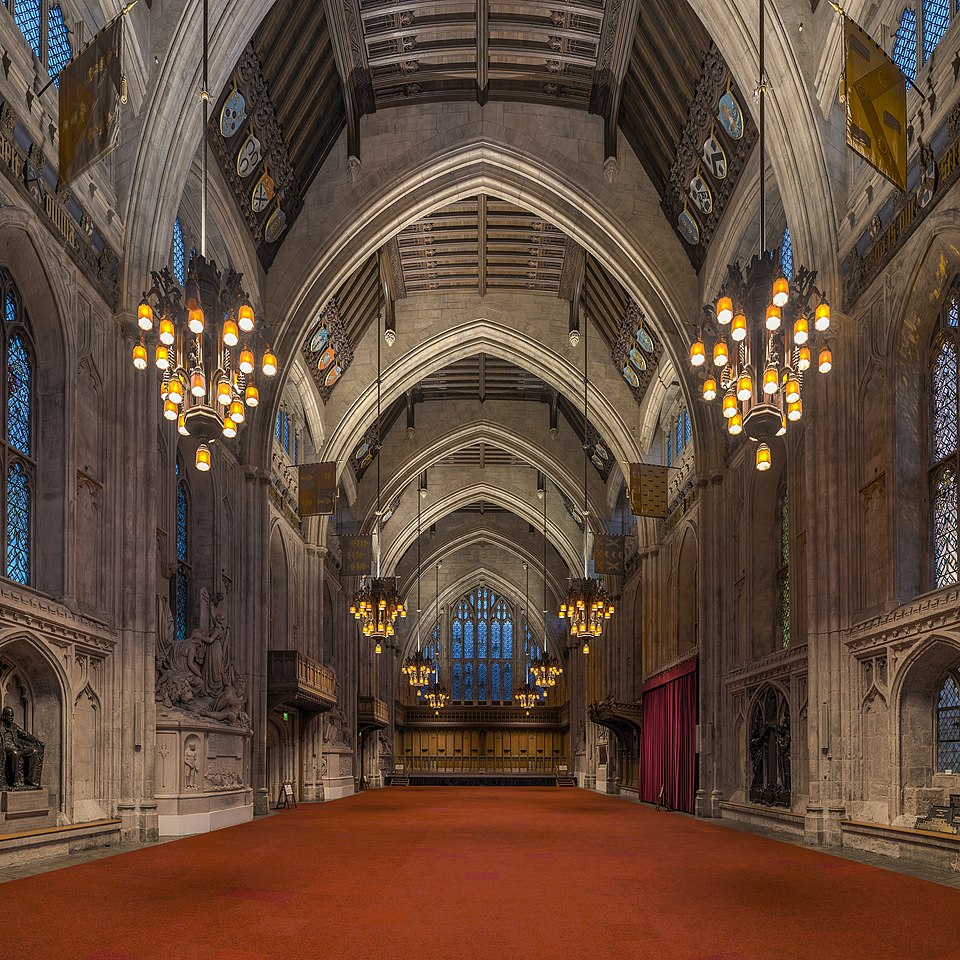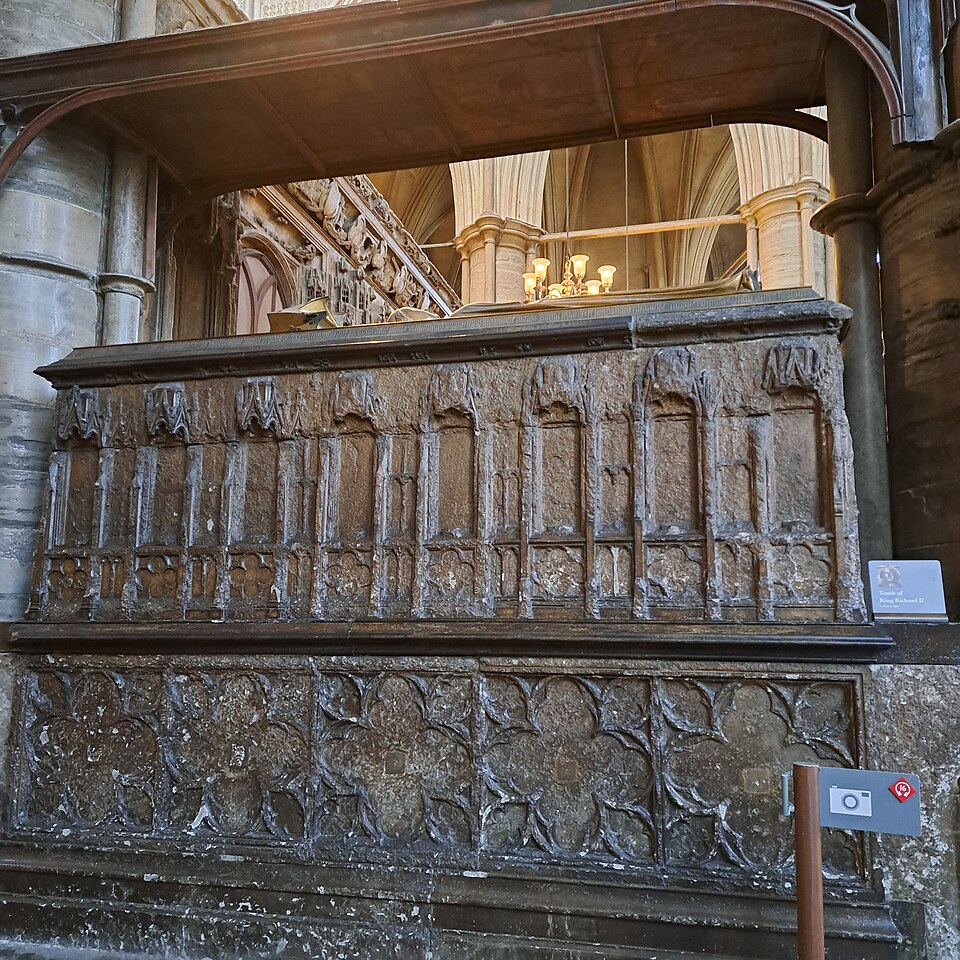OCR Specification focus:
‘Quarrel with London (1392); death of Queen Anne (1394) and its impact’
Richard II’s later personal rule was marked by political tension and emotional strain. The quarrel with London in 1392 and the death of Queen Anne in 1394 profoundly affected both the king’s authority and his personal outlook on monarchy.
The Quarrel with London, 1392
Background to the Dispute
Richard II’s reign was characterised by recurring tension between the crown and its subjects. By the early 1390s, the financial difficulties of the crown, alongside the king’s determination to enforce royal prerogative (the monarch’s exclusive rights and privileges), had created an atmosphere of mistrust.
The City of London was not only the wealthiest and most influential city in England but also essential to the crown for loans and political legitimacy. Its citizens, particularly the guilds and wealthy merchants, had traditionally enjoyed a degree of autonomy in return for their financial support of the monarchy.
Causes of the Quarrel
The 1392 dispute erupted when Londoners refused to provide the level of taxation and financial aid demanded by Richard II. Their resistance was linked to:
Economic pressures: The costs of war with France and Scotland placed heavy demands on urban taxpayers.
Political resentment: Many citizens resented the influence of Richard’s favourites, particularly Michael de la Pole and Robert de Vere, who were blamed for poor governance.
Assertion of rights: The city’s ruling elite sought to defend their traditional liberties against what they viewed as excessive royal intrusion.
The King’s Response
Richard reacted with fury to London’s defiance. In 1392 he:
Revoked the city’s charter (legal document granting privileges).
Imposed direct royal control over the city’s government.
Removed the right of Londoners to elect their own mayor, appointing instead a royal official.
Charter: A royal grant guaranteeing rights, privileges, or lands to individuals, towns, or institutions. Revocation of a charter stripped these protections.
This action demonstrated Richard’s commitment to absolute authority and his willingness to punish even the most powerful subjects when challenged.
Resolution and Consequences
The confrontation eventually ended with a negotiated settlement. London’s privileges were restored after its leaders submitted humbly to the king, paying a large fine.
In 1392 Richard II seized London’s liberties, suspended the city’s self-government and exacted a £10,000 fine, before restoring the charter in a carefully staged reconciliation.

The Great Hall of London’s Guildhall, long the chamber of the City’s civic authority and Common Council. This real-world interior helps students connect the 1392 suspension of London’s liberties to the institutions affected. The view includes later fixtures, but the function it represents—corporate self-government—directly underpins the episode. Source
The dispute highlighted Richard’s fragile relationship with the political nation:
It alienated sections of the mercantile elite, undermining long-term urban support for the crown.
It showcased the king’s increasing reliance on intimidation rather than negotiation.
It strengthened Richard’s belief in the divine right of kings, reinforcing his sense of personal superiority over subjects.
The Death of Queen Anne, 1394
Queen Anne’s Role in the Court
Anne of Bohemia, Richard’s queen since 1382, had been politically unassertive but personally influential. Known for her gentleness and mediation, she:
Acted as a moderating influence on Richard’s temper.
Maintained connections with sections of the nobility.
Softened the king’s image among subjects through her piety and generosity.
Her presence provided stability at court, even during periods of political turmoil.
The Circumstances of Her Death
In June 1394, Anne died of plague at Sheen Palace. She was only 28. Her death deeply shocked Richard, who was emotionally dependent on her companionship.
Anne of Bohemia died at Sheen (Shene) on 7 June 1394; grief-stricken, Richard ordered the demolition of the palace and retreated into mourning.

Engraved view of the joint tomb of Richard II and Anne of Bohemia in St Edward the Confessor’s Chapel, Westminster Abbey. It shows the recumbent effigies commissioned in the 1390s, the period covered by this unit. As a 19th-century illustration of a medieval monument, it includes artistic conventions not required by the syllabus but accurately depicts the effigies’ form and setting. Source
Impact on Richard II
The effects of Anne’s death were dramatic:
Richard entered a period of intense grief, reportedly destroying Sheen Palace in anguish.
His behaviour towards courtiers and subjects became more unpredictable and authoritarian.
The loss of Anne removed a crucial moderating figure, leaving Richard more isolated.
Bereavement: The state of loss following the death of a close relation. In medieval monarchy, bereavement could disrupt political stability as well as personal wellbeing.
Political Consequences
The death of Queen Anne influenced Richard’s rule in several ways:
Weakened Royal Image: The absence of a queen diminished the ceremonial and diplomatic functions of the monarchy. Queens often acted as intercessors for subjects; this role vanished.
Loss of Mediation: Nobles who had relied on Anne’s intercession to temper Richard’s anger now faced a harsher king.
Strain on Legitimacy: Richard’s marriage had provided important international links with the Holy Roman Empire; Anne’s death weakened these diplomatic ties.
Combined Significance of the Quarrel and Bereavement
Escalation of Autocracy
The quarrel with London demonstrated Richard’s increasing tendency towards autocratic governance, where the monarch asserts unrestrained authority. Following Anne’s death, this trend accelerated, as Richard no longer had his queen’s moderating presence.
Growing Alienation of Subjects
Both events alienated powerful groups:
Merchants and city elites distrusted the king after 1392.
Nobles grew wary of his unstable temper after 1394.
This alienation contributed to the erosion of political support that would eventually culminate in Richard’s downfall in 1399.
Legacy for Richard II’s Reputation
The quarrel with London and the bereavement of 1394 were turning points in Richard’s reign. Together they reinforced perceptions of him as:
Overly vindictive towards opposition.
Emotionally volatile and personally fragile.
A monarch increasingly divorced from the political realities of his kingdom.
These perceptions became embedded in contemporary chronicles and shaped later historical judgements of Richard II’s kingship.
FAQ
London controlled much of England’s overseas trade, particularly in wool, the country’s chief export. Its merchants provided loans essential for financing royal wars.
The city’s political importance was also significant: the king’s relationship with London influenced perceptions of legitimacy across the realm. Alienating London risked damaging the monarchy’s wider reputation.
City officials staged a highly ritualised act of submission at Westminster.
They approached Richard barefoot in penitent clothing.
They carried the city’s charter in their hands, offering it back to the king.
This symbolic act emphasised the king’s authority while allowing reconciliation.
Such displays reinforced Richard’s view of kingship as divinely sanctioned.
It reveals his preference for asserting authority through punishment and symbolic gestures rather than compromise.
Revoking London’s charter was an extreme measure that shocked contemporaries. The heavy fine imposed demonstrated Richard’s belief in royal prerogative and willingness to humiliate powerful subjects.
Sheen was Richard’s favourite residence and a place closely associated with Anne. Destroying it was a highly personal expression of grief.
However, the act also revealed Richard’s impulsive temperament. To contemporaries, demolishing a major royal palace seemed irrational, reinforcing the perception that his judgement was clouded by emotion rather than reason.
As queen consort, Anne played a central role in court ceremonies, intercessions, and patronage. Her absence reduced the splendour of Richard’s court life.
The loss of her household also meant fewer Bohemian influences at court, which had introduced new fashions and customs.
This created a cultural shift, leaving Richard’s court more insular and intensifying his reliance on favourites rather than the queen’s circle.
Practice Questions
Question 1 (2 marks)
In which year did Richard II’s quarrel with the City of London take place, and what action did he take against the city?
Mark scheme:
1 mark for correctly identifying the year as 1392.
1 mark for correctly identifying the action as the revocation of London’s charter / suspension of its liberties (accept equivalent wording such as removal of privileges or direct royal control).
Question 2 (6 marks)
Explain two ways in which the death of Queen Anne in 1394 affected Richard II’s rule.
Mark scheme:
Up to 3 marks per explanation.
Award 1 mark for identifying a relevant impact.
Award 1 further mark for description of how it affected Richard personally or politically.
Award 1 additional mark for contextual development or exemplification.
Examples of valid points:
Richard’s grief and emotional instability (1 mark), shown through acts such as the destruction of Sheen Palace (2 marks), which made his behaviour appear more unpredictable and alienated supporters (3 marks).
The loss of Anne’s mediating role (1 mark), which removed a moderating influence on the king (2 marks), resulting in harsher treatment of nobles and subjects and contributing to his later reputation for tyranny (3 marks).
The diplomatic consequences (1 mark), as her marriage had provided links with the Holy Roman Empire (2 marks), weakening Richard’s international position after 1394 (3 marks).

